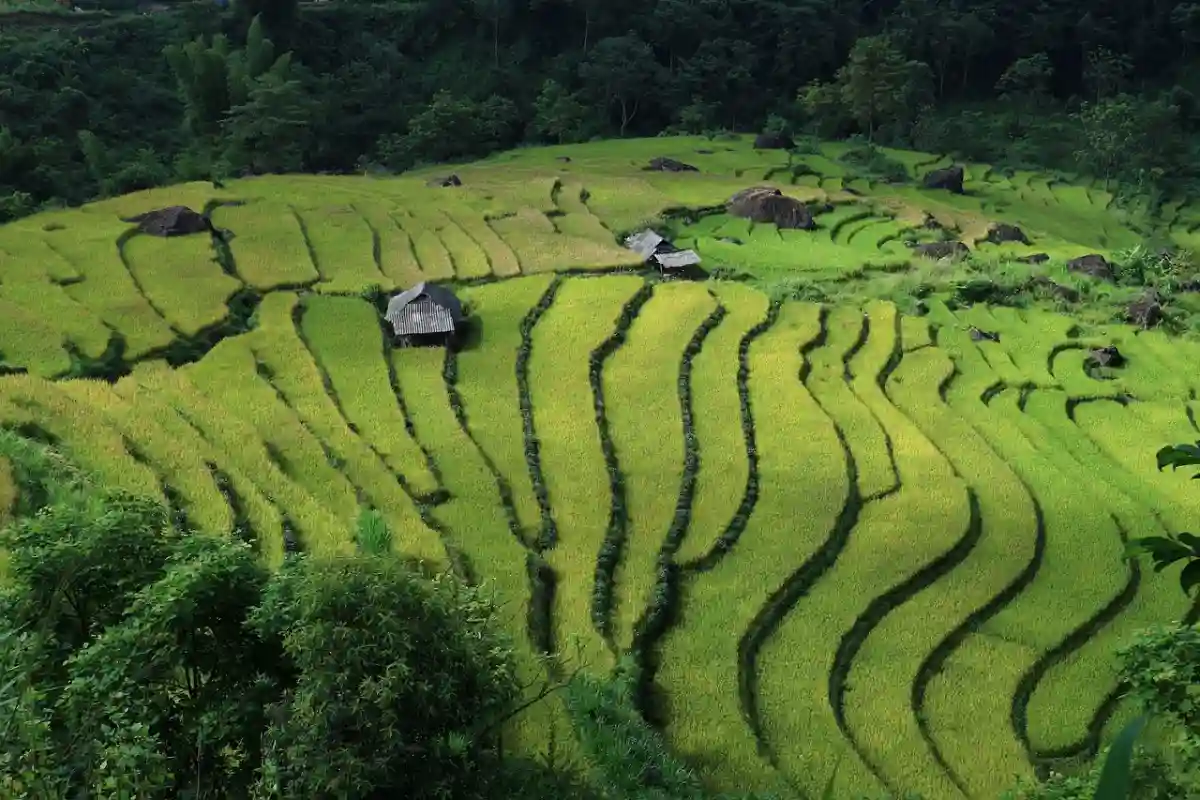Some countries are instantly recognizable — their names call to mind iconic landmarks and famous dishes. But some countries reveal themselves slowly, layer by layer, as you explore them. Vietnam is one of those rare destinations. It stretches along the eastern edge of Southeast Asia, with the South China Sea to the east and green mountains rolling toward Laos and Cambodia.
You’ll find centuries-old temples, bustling street markets, French colonial architecture, white-sand beaches, and rice terraces carved into the hillsides. In Hanoi’s Old Quarter, you’ll hear the laughter of vendors over the clatter of coffee cups. In Ho Chi Minh City, scooters stream past art deco buildings. In between, there are bays dotted with limestone islands, emerald fields, and sleepy fishing villages.
Vietnam Entry Overview
Some travelers can enter Vietnam without a visa, while others must apply for an eVisa before arrival. Knowing your status before you book flights will save you both time and stress. The eVisa is an official document that lets you avoid embassy visits and complete your application entirely online.
What is the Vietnam eVisa?
The Vietnam eVisa is an official travel authorization for citizens of eligible countries. It was introduced to streamline entry and cut down on paperwork. Instead of visiting an embassy, you complete an application online, upload your documents, pay the fee, and receive your eVisa by email.
It’s available for tourism, business, visiting family and friends, study courses, and official travel. Currently, the Vietnam eVisa is valid for single entry, lasting up to 90 days. You must have it approved before you fly — it cannot be obtained on arrival.
Who Needs a Vietnam eVisa?
If your passport is not from a visa-exempt country, you’ll likely need to apply for a Vietnam eVisa. Eligible travelers come from a long list, including citizens of Australia, Canada, the United States, most of Europe, Japan, and South Korea.
Common reasons to apply include:
- Tourism (exploring Ha Long Bay, Hue’s imperial palaces, or Hoi An’s lantern-lit streets)
- Business trips and trade meetings
- Visiting relatives or attending official events
You can enter Vietnam with an eVisa through major international airports such as Hanoi (Noi Bai), Ho Chi Minh City (Tan Son Nhat), and Da Nang, as well as certain land border crossings and seaports.
Process for Getting Your Vietnam eVisa
Applying is straightforward:
- Visit Vietnam’s official eVisa portal.
- Fill in your personal and travel details.
- Upload your passport scan and a passport-style photo.
- Pay the processing fee online.
- Wait for email confirmation with your eVisa in PDF form.
Print your eVisa and keep a digital copy handy — airlines and immigration officers will check it alongside your passport.
Required Documents
Before applying, prepare:
- Passport valid for at least six months beyond your arrival date
- Digital passport-style photo (white background preferred)
- Valid email address
- Payment method (credit/debit card)
Top Places to Visit in Vietnam
Once your eVisa is approved, Vietnam opens itself to you in vivid color:
Hanoi – Wander the Old Quarter’s narrow streets, taste strong egg coffee, and watch life unfold around Hoan Kiem Lake.
Ha Long Bay – Sail past limestone pillars rising from green waters. An overnight cruise is unforgettable.
Hoi An – Stroll lantern-lit streets, shop for tailored clothes, and take a cooking class.
Hue – Explore imperial tombs and the citadel’s vast courtyards.
Sapa – Trek through rice terraces and meet ethnic minority communities in mist-covered mountains.
Ho Chi Minh City – Dive into markets, rooftop bars, and museums that tell the story of Vietnam’s history.
Travel Tips for Vietnam
- Best time to visit: March–April and September–November for mild weather.
- Currency: Vietnamese Dong (VND). US dollars are sometimes accepted in tourist areas.
- Languages: Vietnamese is official; English is widely understood in cities.
- Transport: Trains, domestic flights, and buses connect major cities; Grab is popular for taxis.
- Health: No mandatory vaccines, but travelers to rural areas may consider malaria precautions.
- Connectivity: Local SIM cards are affordable; Wi-Fi is common in cafes.
Conclusion
Vietnam’s eVisa system takes the stress out of planning your entry, so you can focus on your journey. Apply online, pack your curiosity, and get ready for a country that’s as complex and captivating as its history.



